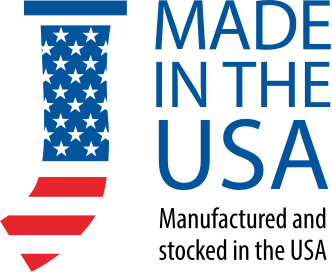The American Public Transit Association (APTA) is known as the leader in advancing public transportation and setting the standards in creating public transportation that is available, accessible, and safe for all Americans in communities across the country. APTA has specific safety standards when it comes to all areas of public transportation, including bus, paratransit, light rail, commuter rail, subways, waterborne passenger services, and high-speed rail. This week we are taking time to help you navigate the specific photoluminescent emergency signage safety requirements for passenger rail cars.
Photoluminescent emergency signage is now a requirement in all passenger rail equipment. It is important to have the correct photoluminescent product in its correct placement because when a rail car loses its power, this emergency signage will be the visible light to guide those on the train to safety.
F.A.Q. on Photoluminescent Materials Used For Emergency Signage:
What is photoluminescent material? Phosphor is the main ingredient found in photoluminescent materials, including photoluminescent emergency signage. Phosphor can absorb, store, and emit light at a later time when it is exposed beforehand to light.
APTA states that photoluminescent material (which they call PL throughout their readings) is material that has the property of emitting light that continues for a length of time after excitation by visible or invisible light has been removed (i.e., self-illuminating).
What is high-performance photoluminescent (HPPL) material? Throughout APTA's Passenger Rail Equipment Safety Standards when discussing photoluminescent safety signage, it references using high-performance photoluminescent material (HPPL). This is a photoluminescent material that is capable of emitting light at a very high rate and for an extended period of time. To meet HPPL standards, the material must have a minimum luminance value of 7.5 millicandelas per square meter (7.5 mcd/m
2), for 1.5 hours after removal of the charging light source. Unless otherwise permitted in standard SS-PS-002-98, Rev. 3, the charging light source is specified as a fluorescent lamp with a color temperature of 4000-4500°K that provides an illuminance of no more than 1 fc on the test sample for a duration of no more than 1 hour.
We know this may sound confusing. To make it simple, when looking for a photoluminescent material for your passenger rail emergency signage, be sure to check that the product meets their specific safety standards APTA SS-PS-002-98 (Rev.3) and APTA SS-PS-004-99 (Rev.2), like our Glo Brite® 7812
APTA compliant material.
How can you ensure your HPPL system is getting adequately charged to perform when needed? To make sure your photoluminescent safety signage is ready to perform, your normal lighting system (i.e., light fixtures), needs to be located in the proximity of each HPPL component and oriented to ensure that the HPPL material is adequately exposed to charging light, according to APTA Safety Standards. These light fixtures located in the proximity of each HPPL system need to be specified so that their light-dispersion patterns provide the minimum illuminance levels at the surface of the component (check table located in
section 2. 4.2 for details)
Where should you apply photoluminescent emergency signage in passenger rail cars?
APTA safety standards designate several areas that high-performance photoluminescent material should be used and how it should be applied. It is important to follow their requirements to ensure the safety of all employees and guests onboard.
Location 1: Door Exit Handles, Latches or Operating Buttons
All door exit handles, latches, or operating buttons should be marked with high-performance photoluminescent material using one of the following methods:
- Outline stripping that is no less than 1 inch (2.54 cm) wide to the extent practicable around the perimeter of the opening device;
- Area-wide pad that is applied to the door or door frame directly behind the handle or latch with no less than 16 square inches (103 cm2).
Also, each door should be equipped with a separate manual override device for a power-operated door intended for emergency egress and should be marked with a sign/marking containing the words "Emergency Door Release," "Manual Door Release," or other similar wording. These signs or markings need to be placed at the manual door control or at an appropriate location in its immediate proximity. If it is not obvious where the manual release device is located relative to the door handle, latch or operating button, then a door emergency release locator sign needs to be posted. The manual door release locator sign(s) or marking(s) should consist of brief text, graphic arrow(s), or symbol(s) to direct passengers and crew members from the door control to the location of the manual door release.
Location 2: Vestibule, End-Frame, and Side Doors Leading to the Exterior of the Car and Intended for Emergency Egress
Passenger rail transit cars ordered on or after the adoption of these standards need to have HPPL material and follow these requirements:
- Mark side door exit locations without independently powered emergency lighting.
- Each side door opening intended for emergency egress leading to the exterior of the car shall be marked with a minimum of 144 square inches (929 cm2) of HPPL material placed no higher than 18 inches (45.7 cm) off the floor, with its lowest point no higher than 6 inches (15.2 cm) off the floor. This marking may be comprised of one or more panels placed either on the door and/or in its immediate vicinity. A door with two leaves that open for emergency egress is considered a single door opening. So, 144 square inches (930 cm2) of HPPL material is sufficient for that door opening.
- To provide some illumination at the floor for passengers and crew members as they exit, to the extent practical, the material should not be placed on a door leaf/panel that is intended to open for emergency egress or on the part of a wall or partition that would be covered by a door leaf/panel in any position.
- Signs and markings used to comply with the low-level egress path marking (LLEPM) requirements contained in the APTA Standard Rail Transit Vehicle Low Level Exit Path Marking may be counted toward this requirement to the extent that they meet the criteria noted above (e.g., HPPL door delineators required to meet the LLEPM requirements that are installed on the door 18 inches. off the floor would count as 36 square inches of the 144 square inches required).
Location 3: Emergency Window Exits
Ensure all emergency window exit markings are constructed of high-performance photoluminescent material.
What should you look for when choosing a high-performance photoluminescent (HPPL) system?
The manufacturer or supplier of the HPPL material should be able to provide independent laboratory certified test result reports showing that all tested samples of passive HPPL material, as used in the finished component configurations (including any cover or protective coating if used, but not including text or graphics), complies with the minimum luminance criterion of 7.5 mcd/m
2 , after 1.5 hours, when tested according to the provisions of ASTM E-2073-07, Standard Test Method for Photopic Luminance of Photoluminescent (Phosphorescent) Markings, with the following three modifications:
- Activation: The HPPL material shall be activated with a fluorescent lamp of 40 W or less and a color temperature of 4000-4500º K that that provides no more than 1 fc of illumination as measured on the material surface. The activation period shall be for no more than 1 hour.
- Luminance: The photopic luminance of all specimens of the HPPL material shall be measured with a luminance meter as described in 5.2 (of ASTM E-2073), a minimum of 1.5 hours after activation has ceased.
- Luminance in mcd/m2: The test report shall include a luminance measurement of 1.5 hours after activation has ceased.
The manufacturer or supplier is required to have a minimum of one batch of material for signs and/or markings of a given type certified. Know that signs or markings of the same certified type of material can be sold to multiple customers, even with minor changes in text or typography.
The color and contrast of your PL or HPPL material are also very important. APTA Safety Standards states that the lettering and pictogram(s) utilized on interior emergency exit signage or markings needs to be able to achieve a luminance contrast ratio of not less than 0.5, as measured by a color-corrected photometer. The document recommends that the color contrast choice for all new and replacement signage is red lettering/graphics on a light PL background, preferably with a matte finish, except for those instances in which bold contrast with the background on which the sign is placed would not be attainable. It states that having a contrasting border around the outer edge of the sign will also enhance visibility. The standard also notes that the more of the HPPL surface that is visible, the more conspicuous the resulting sign. It warns that graphics or heavy text covering the HPPL material will reduce the light output of the sign letters, and thus the conspicuity and legibility of the signs as well, even though the HPPL material passes the tests required.
The Passenger Rail Equipment Safety Standards (PRESS) applies to all commuter rail programs, and you can read the entire PRESS program in detail
here. Please contact us with any questions regarding photoluminescent safety signage for your passenger rail cars.























